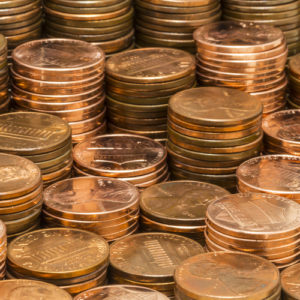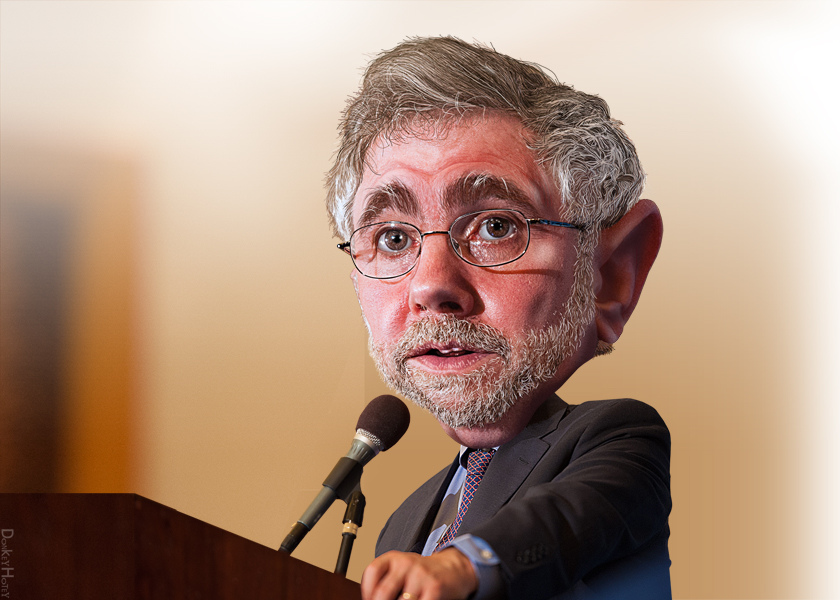How to Think About Money… and the Coronavirus

- Recent cancellations, closures and orders to shelter in place may seem extreme, but they’re necessary to protect our health and wealth.
- Today, Alexander Green explains why compounding – a key factor for investors – is so dangerous when it comes to a disease like COVID-19.
If you invested a penny and it doubled in value every day for 30 days, how much would you have?
Please don’t just keep reading.
Even if you have no idea what the amount might be, go ahead and make a quick estimate. Then jot it down.
I’ll reveal the answer to you shortly. It may surprise you.
But first let me tell you about an email exchange I had with a friend last week.
Most would consider him well-educated, well-traveled and well-read.
Yet he sincerely believes that the cancellation of classes, meetings and sporting events, the closure of nonessential businesses, and government orders to shelter in place are nothing more than mass hysteria in reaction to media hype.
I patiently explained why he was wrong, but he was having none of it.
“It’s time for the president to say, ‘Enough,'” he wrote. “And sign his own executive order: Everyone back to work! That’s what it’s going to take.”
Whoa.
What it will take is the federal government ordering Americans to stop social distancing and get back to work in the middle of the pandemic?
He took great offense when I called his idea “dumb,” although I don’t know why.
If a respected friend told me I was talking nonsense on a particular subject – since we are all ignorant on many – I would consider it a favor, and a good reason to reexamine the evidence.
Look… Americans haven’t experienced a global pandemic in our lifetimes. This is new to all of us.
That’s why it’s important – no matter what our opinions or biases may be – to rely on facts from reliable sources, like the Centers for Disease Control and Prevention (CDC).
Yet millions are still ignoring its advice. U.S. Surgeon General Dr. Jerome Adams warned this morning that Americans are not taking the threat seriously enough.
Why? There are several reasons, as I see it.
- Public trust in the press is near a historic low.
- The mainstream media’s habit of calling everything a “crisis” – the environmental crisis, the healthcare crisis, the border crisis, the inequality crisis – reduces the impact of a genuine crisis like this one.
- Social media is even worse, rapidly conveying all manner of falsehoods, distortions and misinformation.
- President Trump’s initial downplaying of the virus – though he has since done a 180 – gave some a false sense of security.
- Not 1 in 5,000 people in this country has been tested, making the problem seem less severe than it is.
- American individualism makes us eager to rebel against restrictions.
- Young people believe they are immortal, and hence not truly at risk.
- The mortality rate is highest among the elderly, but baby boomers don’t consider themselves that old.
- It takes a lot to persuade people to change their comfortable routines.
- The unprecedented safety of modern life has made a true crisis seem unimaginable to some.
- Confirmation bias: We all have a strong impulse to seek evidence that confirms our beliefs and ignore or reinterpret evidence that refutes them.
- The speed at which an outbreak spreads can be hard to grasp.
These last two factors may best explain my friend’s attitude.
Looking at the number of reported cases so far, he seriously underestimates how many are infected and how fast COVID-19 will spread.
To determine the number of people likely to be affected, scientists give the disease an R0 – pronounced “R naught” – to estimate how many healthy people one contagious person will infect.
An R0 of two – a conservative estimate – suggests that a single infection will, on average, become two, then four, then eight and so on.
The number of confirmed coronavirus cases worldwide has more than doubled in the past week to 350,000.
To put this in perspective, an R0 of two is like money compounding at 100%.
Hence my original question: If a penny doubled for 30 days, what would it turn into?
The answer is $10,737,418.24.
I’ll bet your original guesstimate was nowhere near $11 million.
Don’t get me wrong. I’m not suggesting that one person will ultimately infect 11 million others.
(Although that will almost certainly end up being true of the first person to transmit the coronavirus to someone else.)
But the easy transmission and rapid spread are why health experts and public officials are trying desperately to “flatten the curve” – reduce the R0 – and keep the virus from devastating the economy and overwhelming our public health system.
Albert Einstein called compounding “the most powerful force in the universe.”
That’s why we want to do what we can to keep the coronavirus from compounding.
As for your dividends, interest and realized capital gains, you want to reinvest those at today’s lower levels.
Why? Because that’s how money snowballs, too.
Good investing,
Alex






